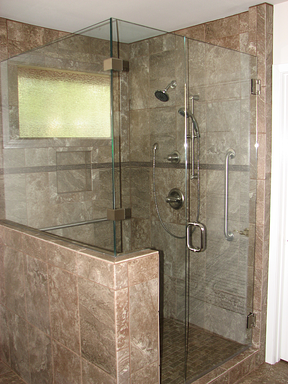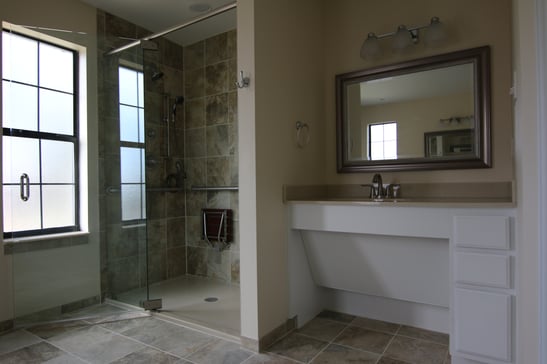The aging in place maket in the US today is constantly being influenced by the increasing size of the aging population, the market desire to remain in one's home, a constantly increasing cultural diversity, and our aging housing stock associated with it's reduced affordability. Our aging population is really made up of two prominant age groups formed by the age 65 and over population and the baby boomers who were born between 1946 and 1965. Together these two groups own over 48% of all the US home inventory today. Aging in place design and the desire to remain in one's home is driven by social attachments via a network of neighbors, friends, and family bring about a new wave of elder construction solutions. Our cultural diversity assures that the same aging in place tactics for elder living solutions cannot work across the board for all individuals just as an individual's ability to live independently varies from person to person. With constantly aging housing, costs can be a major barrier in home modification for many residents. A catch 22 situation can arise when you consider the reduced affordability of another home versus the one that is presently occupied. In this case the homeowner must use the equity that has accrued in their home's value in order to make the modifications required. You will find out in the long run that it's cheaper to remodel your existing home using your accrued assets than it is to buy a new home in today's market and move.
Aging in place home remodeling in Austin will be completely driven by the homeowner's desire to remain in their home for as long as it is physically possible. When disability strikes, that same home you have endeared for at least part of your lifetime can become a prison that presents barriers, frustrations, and perils at every turn. The lack of any preparation or access upgrades possibly is driven by our youth oriented culture that wants to believe we are all young, bullet proof, and fit and will continue to be so. Perhaps we believe as a society that accessible bathroom upgrades will decrease our home's property values. The contrary is the reality. Just try looking for a barrier free accessible home. Actually, don't even bother. There are none. Oh yes, there are retirement communities for the older "active" seniors but the key word here is active having nothing to do with accessibility. Elder living solutions utilizing universal design provides access to everyone and all generations.
Aging in place services and CAPS certified remodeling in Austin are no different from those in any other city or state within the US. They are surely needed in virtually every home that I've visited in over 30 years of operating my remodeling business. Sadly, our archaic methods of architecture have no room for accessibility within the existing aging home inventory. Aging in place remodeling in Austin, Texas must be done by a certified aging in place specialist to benefit from and capture the most accessibility from the remodeler's education and experience. A successfully trained aging in place remodeler will have several capabilities like the vision and purpose to manage your project, he will have an expertise in construction, he will be skilled in effective communication, he uses time management alongwith his organized skills, and furthermore he will be capable of maintaining a balance and perspective for problem solving throughout your project.
There are really three categories of aging in place customers. Those who are simply and wisely planning ahead for their futures to remain in their present homes. The second category concerns those people who know they have a chronic medical disorder and need to prepare in advance for accessibility issues which will come as a result of their disease. People with diseases that are constantly causing increased physical or mental changes to their being are a good representative of this second group. The third group involves those people who either have had a chronic problem that has progressed severly altering their mobility or those who have sustained a life altering tragedy such as being involved in an accident. All of these groups will drive the future metamorphosis of existing inaccessible dwellings.
Disability is a complex phenomenon representing an interaction between one's physical impairments, the activities they need to perform, and the architectural barriers within the space in which this situation occurs. The terminology and jargon used for disabilities evolves regularly whereas, "handicapped" is no longer acceptable. It is no longer merely a description of intellectual or physical impairments. Each individual with similar impairments describes his or her limitations differently. The blind don't experience their world the same as a person with deafness and so on.
The National Association of Home Builders, in partnership with the AARP and Home Innovation Research Labs, created the CAPS program, which includes training and education on the technical, business management and customer service skills essential to compete in the fastest growing segment of the residential remodeling industry--home modifications for aging in place. David L. Traut CAPS owner of T-Square Company in Austin, Texas is one of the select group of professionals nationwide to earn the Certified Aging-In-Place Specialist (CAPS) designation, identifying him as a home remodeler and builder with the skills and knowledge necessary to remodel or modify a home to meet the unique needs of the older population, disabled owners or their visitors.
For additional information about the CAPS program, visit nahb.org/CAPS. For more information about T-Square Company, visit www.tsquareco.com or call 512-444-0097.

















